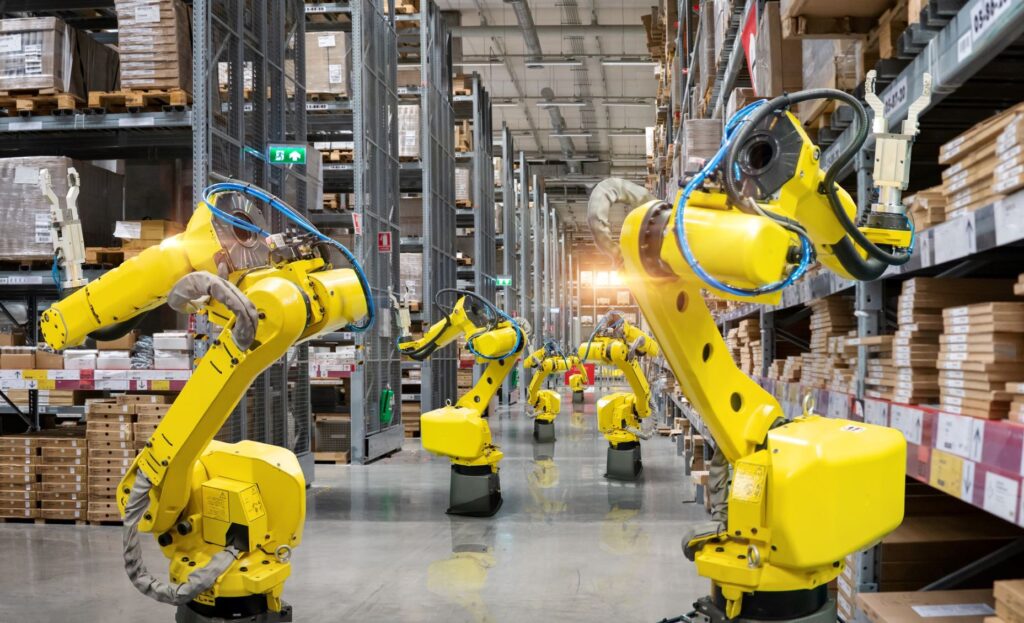In recent years, the field of robotics has experienced a significant transformation with the integration of agility in robot design and development. Robot agility refers to the ability of a robot to quickly adapt to changing environments, navigate through complex spaces, and perform tasks with precision and speed. This emerging trend is expected to revolutionize various industries, including manufacturing, healthcare, and service sectors, by enhancing productivity, efficiency, and safety.

What is Robot Agility?
Robot agility is a multidisciplinary field that combines robotics, artificial intelligence, and mechanical engineering to create robots that can navigate and interact with their environment in a flexible and adaptive manner. Agile robots are designed to be highly versatile, allowing them to perform a wide range of tasks, from simple assembly and inspection to complex surgery and search and rescue operations.
Key Components of Robot Agility
Several key components contribute to a robot’s agility, including:
- Advanced Sensors and Perception: Agile robots are equipped with advanced sensors, such as cameras, lidar, and radar, which enable them to perceive and understand their environment. These sensors provide real-time data, allowing the robot to respond to changing situations and make informed decisions.
- Artificial Intelligence and Machine Learning: AI and machine learning algorithms enable robots to learn from experience, adapt to new situations, and make predictions about future events. This allows agile robots to improve their performance over time and respond to unexpected events.
- High-Performance Actuation and Control: Agile robots require high-performance actuation and control systems, which enable them to move quickly and precisely. This is achieved through advanced motor control systems, high-torque actuators, and optimized kinematics.
- Modular and Reconfigurable Design: Agile robots are often designed with modular and reconfigurable architectures, allowing them to be easily reconfigured for different tasks and environments.
Applications of Robot Agility
The applications of robot agility are diverse and widespread, with potential uses in various industries, including:
- Manufacturing and Assembly: Agile robots can be used to perform complex assembly tasks, such as welding, cutting, and joining, with high precision and speed.
- Healthcare and Surgery: Agile robots are being used in surgical procedures, such as minimally invasive surgery, to enhance precision and reduce recovery time.
- Search and Rescue: Agile robots can be used to navigate complex disaster scenarios, such as rubble or debris, to locate and rescue survivors.
- Service Robotics: Agile robots are being used in service industries, such as hospitality and retail, to provide personalized customer service and improve customer experience.
Benefits of Robot Agility
The benefits of robot agility are numerous, including:
- Increased Productivity: Agile robots can perform tasks with greater speed and precision, leading to increased productivity and efficiency.
- Improved Safety: Agile robots can navigate complex environments and avoid obstacles, reducing the risk of accidents and injuries.
- Enhanced Flexibility: Agile robots can be easily reconfigured for different tasks and environments, reducing the need for specialized equipment and training.
- Reduced Costs: Agile robots can reduce costs by minimizing the need for manual labor and improving overall efficiency.
Challenges and Limitations of Robot Agility
Despite the many benefits of robot agility, there are several challenges and limitations that must be addressed, including:
- Complexity and Cost: Agile robots are often more complex and expensive to design and develop, which can be a barrier to adoption.
- Sensor Noise and Interference: Agile robots rely on advanced sensors, which can be susceptible to noise and interference, affecting performance and accuracy.
- Limited Standardization: There is currently a lack of standardization in robot agility, which can make it difficult to integrate agile robots into existing systems and infrastructure.
- Ethical and Regulatory Considerations: The development and deployment of agile robots raise important ethical and regulatory considerations, such as privacy, security, and safety.
FAQs
- What is the difference between robot agility and traditional robotics?
Robot agility refers to the ability of a robot to quickly adapt to changing environments and navigate through complex spaces, whereas traditional robotics focuses on repetitive and structured tasks. - How do agile robots learn and adapt to new situations?
Agile robots use AI and machine learning algorithms to learn from experience and adapt to new situations, allowing them to improve their performance over time. - What are the key applications of robot agility?
The key applications of robot agility include manufacturing and assembly, healthcare and surgery, search and rescue, and service robotics. - What are the benefits of robot agility?
The benefits of robot agility include increased productivity, improved safety, enhanced flexibility, and reduced costs. - What are the challenges and limitations of robot agility?
The challenges and limitations of robot agility include complexity and cost, sensor noise and interference, limited standardization, and ethical and regulatory considerations.
Conclusion
Robot agility is revolutionizing the field of robotics, enabling robots to quickly adapt to changing environments and navigate through complex spaces. The applications of robot agility are diverse and widespread, with potential uses in various industries, including manufacturing, healthcare, and service sectors. While there are challenges and limitations to be addressed, the benefits of robot agility, including increased productivity, improved safety, and reduced costs, make it an exciting and promising field of research and development. As robot agility continues to evolve and improve, we can expect to see significant advancements in industrial and service robotics, leading to a more efficient, productive, and automated future.
Closure
Thus, we hope this article has provided valuable insights into The Rise of Robot Agility: Revolutionizing Industrial and Service Robotics. We appreciate your attention to our article. See you in our next article!
